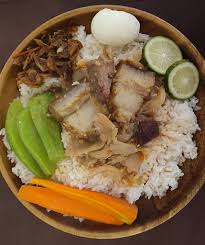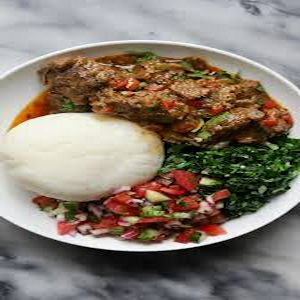Angami cuisine, hailing from the vibrant state of Nagaland in India, offers a rich tapestry of flavors, traditions, and culinary practices that reflect the culture of the Angami Naga people. Known for its emphasis on fresh, locally sourced ingredients and unique cooking techniques, this cuisine captivates the taste buds with a delightful blend of spices and textures. Whether you’re a seasoned food enthusiast or a curious newcomer, exploring the traditional dishes of the Angami community is a journey worth embarking on. In this article, we highlight five must-try Angami dishes that not only showcase the region’s culinary heritage but also provide an authentic taste of Nagaland’s rich cultural identity. From fermented delicacies to fragrant curries, prepare to savor the unique flavors that define this captivating cuisine.
Introduction to Angami Cuisine
The Rich Cultural Heritage of Nagaland
Nagaland, a hidden gem in the northeastern part of India, is home to the Angami people, whose culinary traditions are as vibrant as its colorful festivals. Angami cuisine reflects the people’s rich heritage and connection to nature. Think of it as a delicious tapestry woven from local ingredients, age-old recipes, and the spirit of community. In fact, it’s said that in Nagaland, food is not just sustenance; it’s an expression of culture, identity, and sometimes an entire backstory involving family drama and the neighbor’s cat.
Unique Flavors and Cooking Techniques
Angami cooking is a delightful fusion of flavors, influenced by the region’s geography and climate. From earthy spices to zesty herbs, every dish tells a story. Traditional techniques such as fermentation and smoking are prevalent, adding depth to the dishes—if you thought a little char on your steak was fancy, wait until you try some smoked pork. The town’s grills and the local markets are bustling with life and flavor, creating a feast for both the eyes and the palate.
Overview of Traditional Ingredients
Staples of Angami Cooking
At the heart of Angami cuisine are staple ingredients that form the backbone of their dishes. Rice is the indomitable king, but millet and maize also have their rightful places on the throne. Local spices, like ginger and garlic, are the trusty sidekicks that amplify flavors, while leafy greens and vegetables provide the necessary crunch and nutrition. It’s a balanced diet that’s as colorful as a rainbow after a monsoon.
Locally Sourced Ingredients
What makes Angami dishes truly special is their reliance on locally sourced ingredients. From fresh bamboo shoots to wild herbs that you’d need a treasure map to find, the locals maximize the bounty nature provides. Farmers’ markets are vibrant hubs of activity where you can find anything from fresh fish to hand-picked vegetables, all ready to be transformed into mouthwatering meals. Supporting local farmers here isn’t just trendy; it’s practically a way of life.
Traditional Angami Dishes: Axone – Fermented Soybean Delicacy
History and Significance
Axone, also known as akhuni, is more than just a dish; it’s practically a cultural emblem. Traditionally fermented soybeans, axone has been a staple in Angami kitchens for generations. This dish carries a history that dates back to the early days of the Angami people and is often enjoyed during festivals and gatherings, where it acts as a bridge to connect friends and family (and let’s be honest, it’s probably the reason your in-laws keep coming over to visit).
Preparation Methods
Making axone is an art form, involving a meticulous fermentation process that can take several days. Soybeans are soaked, boiled, and then fermented under the watchful eye of the cook, who probably has a PhD in patience. The resulting dish is earthy, savory, and has a distinct smell that some might describe as “acquired”—if you can get past that, you’re in for a treat.
READ ALSO: Ugali Variations: Creative Twists for Modern American Kitchens
Serving Suggestions
Axone is best enjoyed with steaming hot rice and a generous side of vegetables or meat. It also pairs fabulously with a splash of Naga chili sauce for those who like to live on the spicy side. Just be ready to share; you’ll get a lot of “What is that incredible aroma?” questions from your friends.
Traditional Angami Dishes: Smoked Pork with Bamboo Shoot
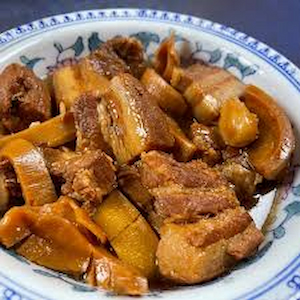
Flavor Profile and Cooking Process
If you thought pork couldn’t get any better, wait until you’ve tried it the Angami way. Smoked pork with bamboo shoots is a flavor explosion waiting to happen. The rich, smoky essence of the pork combined with the tender crunch of bamboo shoots creates a dish that is hearty and comforting. The preparation often involves marinating the pork with local spices, then slow-cooking it, letting the flavors meld together in a love affair that can last for hours.
Pairing with Traditional Accompaniments
To fully experience this dish, serve it with a side of sticky rice and a dollop of axone (because why not double down on the awesomeness?). Pair it with a cold bottle of local beer or traditional rice wine, and you’ve got yourself a feast fit for royalty—though the only crown you’ll wear is the one made of napkins after devouring this delight.
Traditional Angami Dishes: Masor Tenga – Tangy Fish Curry
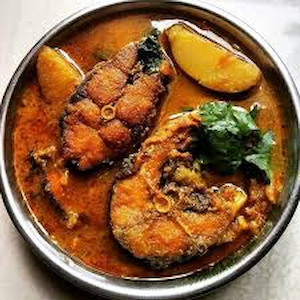
Ingredients and Regional Variations
Masor Tenga is a lip-smacking, tangy fish curry that dances on your taste buds like a joyful local at a village festival. The cornerstone of this dish is fresh fish, commonly the mighty mackerel or humble tilapia. The magic happens with the addition of the region’s secret ingredient: the infamous “khar,” a kind of alkaline substance, usually derived from the ashes of the sap of the plant. Don’t worry if khar isn’t accessible; tomatoes can save the day with their robust tartness. This dish might vary from home to home, with some opting for a milder experience, while others dial up the tang to the max.
Step-by-Step Cooking Instructions
1. Prepare Your Fish: Start by cleaning and cutting the fish into pieces. A good rinse under cold water is all it takes.
2. Make the Base: In a pot, heat some mustard oil until it shimmers like a disco ball. Add finely chopped onions, and sauté until golden and beautiful.
3. Add the Tomatoes: Toss in chopped tomatoes and let them break down. Stir in turmeric and salt, and let the flavors mingle like old friends.
4. Introduce the Fish: Carefully place your fish pieces into the pot, and sprinkle in your khar or crushed tomatoes. Add water to create a gravy that’s not too thick, not too thin—think Goldilocks.
5. Simmer: Cover and let it cook on low heat for about 15-20 minutes, allowing the fish to soak up those flavors and the kitchen to smell like heaven.
6. Finish it Off: Garnish with fresh coriander before serving.
Traditional Angami Dishes: Zuthu – Traditional Rice Dish
Different Variations of Zuthu
Zuthu is not just a dish; it’s an experience. Think of it as Angami’s answer to fried rice, but way more spectacular! The base is simple: rice, cooked to perfection. But what sets Zuthu apart is the addition of regional veggies and meats, making it a pop-up buffet of flavors. Variations can include everything from meat (think pork, chicken, or beef) to a colorful medley of chopped seasonal veggies. Some folks like it spicy with a kick of chili, while others prefer a milder, herbaceous touch. To put it simply, every family in Angami culture has their own signature Zuthu recipe—it’s like a family heirloom, but tastier.
Serving and Enjoying with Side Dishes
Serving Zuthu is an art form of its own. It’s traditionally served in a large bowl, meant for sharing—because sharing is caring, right? Pair it with a side of Naga chutney for that extra zing or even some simple dal to soak it all up. And don’t forget the obligatory fried fish or spicy pickles that can elevate your Zuthu experience to a gourmet level. As you gather around the table, it’s all about the laughter, stories, and a bit of friendly competition over who makes the best Zuthu.
Traditional Angami Dishes: Naga Chutney – Spicy Condiment
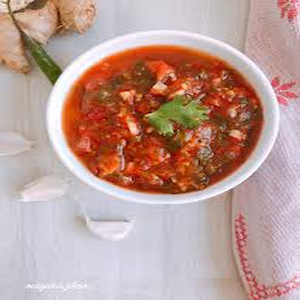
Traditional Angami Dishes: Ingredients and Preparation Techniques
If Naga Chutney were a celebrity, it would be the A-list item in every Angami household. This spicy condiment has a cult following, and for good reason! You’ll need roasted green chilies, garlic, and a sprinkle of salt. Some might add roasted sesame seeds for an extra layer of texture and flavor. The beauty of making Naga chutney lies in its simplicity. Just toss everything into a blender—let those flavors mingle and whirl around like they’re at a dance party—until you have a smooth consistency.
Traditional Angami Dishes: Using Chutney to Enhance Dishes
Now, let’s get to the fun part. This chutney doesn’t just sit pretty on the table; it’s a daredevil on your plate! Use it to amp up your Zuthu, liven up your Masor Tenga, or even as a dip for crispy snacks. You can drizzle it over grilled meats, or just grab a spoon and indulge straight from the jar (we won’t tell). The spice will not only awaken your taste buds but will also leave you on a flavorful high you’ll want to chase again and again.
Conclusion: Embracing Angami Culinary Heritage
Encouraging Exploration of Local Flavors
As you dive into these Angami dishes, remember that food is not just nourishment; it’s a cultural narrative waiting to be savored. Each bite is a page of history, bursting with tradition and local flavor. Embrace the adventure of trying new ingredients, experimenting in your kitchen, and perhaps, even swaying your taste preferences. We encourage you to seek out local markets or even engage with culinary communities that celebrate Angami cuisine.
Final Thoughts on Traditional Dishes
Ultimately, the joy of food lies in its ability to connect people. Whether you’re sharing a hearty meal with family or experimenting with new recipes among friends, traditional dishes like these are a celebration of life, love, and culture. So why not gather around the table, whip up some of these Angami delights, and make a few unforgettable memories? After all, good food and laughter are the best ingredients for a happy life. Bon appétit, or as we say in Angami, “Küi Küi!”
In conclusion, Angami cuisine offers a delightful exploration of flavors and traditions that are deeply rooted in the culture of Nagaland. The five dishes we’ve highlighted—Axone, Smoked Pork with Bamboo Shoot, Masor Tenga, Zuthu, and Naga Chutney—are just a glimpse into the rich culinary heritage of the Angami people. Whether you’re trying these dishes for the first time or revisiting familiar favorites, each bite tells a story of tradition and community. We encourage you to embrace these culinary treasures and savor the unique tastes that make Angami cuisine so special.
Frequently Asked Questions
What are the key ingredients commonly used in Angami dishes?
Angami cuisine prominently features ingredients such as rice, leafy greens, smoked meats, fermented soybeans (Axone), and a variety of spices and herbs that enhance the flavors of the dishes.
Are Angami dishes suitable for vegetarians?
Yes, while many traditional Angami dishes include meat, there are several vegetarian options available, such as dishes made with local vegetables and legumes, which are equally flavorful and satisfying.
Where can I find authentic Angami cuisine?
Local restaurants specializing in Naga food, particularly in regions with a significant Naga population, often serve authentic Angami cuisine. Additionally, exploring food festivals or cultural events can provide opportunities to taste traditional dishes.
How can I prepare these dishes at home?
Home cooks can prepare many traditional Angami dishes by sourcing the necessary ingredients and following detailed recipes, which they often find in cookbooks or online resources dedicated to Naga cuisine.
